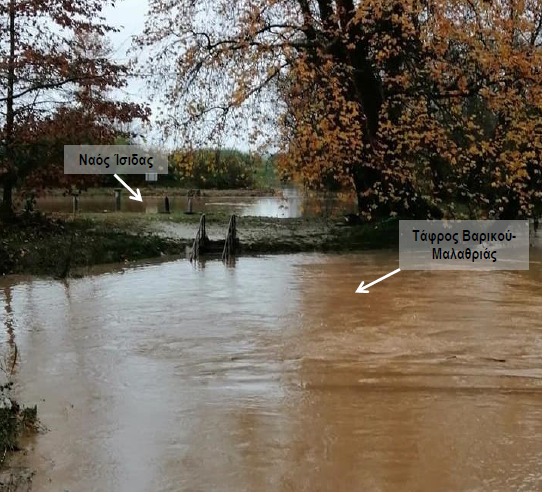This is a project of utmost importance to protect the holy city of the Macedonians from the dangers caused by the heavy rains, which often hit the area
Completes the preparation of studies for flood control shielding of the archaeological site of Dion.
It is a project of utmost importance to protect the holy city of the Macedonians from the dangers caused by the heavy rains, which often hit the area. The flood protection of Dios is included in the national action plan of the Ministry of Culture, which concerns the protection of important archaeological sites and monuments from the effects of climate change, financed by the Recovery Fund with a total budget of approximately 30,000,000 euros.
The Minister of Culture Lina Mendoni stated: “The occurrence of floods, which have threatened Dion since ancient times, causes erosion and gradually conditions of instability of the structural elements and the natural slopes of the archaeological site. Dion is one of the major archaeological sites, in which the Ministry of Culture is carrying out protection projects against the risk of flooding, which is intensifying also due to the climate crisis. For this specific project, with a budget of 2,250,000 euros, solutions were sought in the context of the Ministry of Culture’s national action plan to protect the country’s archaeological sites and monuments from the consequences of the climate crisis. After the positive opinion of the Central Archaeological Council on the final studies – topographical, hydrogeological, hydraulic and the supplementary hydraulic study of the arrangement of the river Vaphyra – we proceed with the implementation of the necessary projects of systematic monitoring and shielding of the archaeological site of Dion. With the anti-flood protection works, in combination with those already underway for the highlighting of monuments in the Ancient Agora, the improvement of the infrastructure in the Ancient Theater, the study for the modernization of the Archaeological Museum and the renovation by ODAP of the building entrance-sales-refreshment, in the archaeological site, with a total budget of approximately 3,000,000 euros, we are protecting and upgrading a major archaeological site of Macedonia”.
The study – topographical, hydrogeological, hydraulic – of the Vafyra ditch was carried out in two stages: The first concerned the hydraulic control of uneven flow for the adequacy of the existing ditch. The second concerned the hydraulic study of arrangements and configurations of the Vaphyra and the calculation of the drainage capacity of the existing Varikos – Malathria ditch in its part located inside the archaeological site – approximately 2 km long – and the required local arrangements and configurations of the ditch for the protection of the archaeological site. Regarding the area of the two sanctuaries, of Isis and High Zeus, their exclusion from Vaphyra was examined by proposing the construction of embankments, between the sanctuaries and the river bed, in a way that would be aesthetically and archaeologically acceptable.
As for the settlement works, to remove the flood inadequacy observed in the Vafyra ditch, a project to stop the flow is proposed, under a local road, before the junction of the Karitsa ditch with the stream. The construction of a retaining wall, perpendicular to the flow, is planned, which will interrupt the flow of water downstream and inside the archaeological site. The intervention will be combined with a suitable diversion project of the Karitsa ditch runoff to a suitable recipient. To protect the ancient wall from flooding, a study has already been prepared for the route of the diversion ditch of the Ourlia stream and protection interventions.
In ancient times, the presence of the navigable river Vaphyra constituted the natural eastern boundary of the city of Dion, providing access to the sea, the possibility of engaging in trade and the economic development of the region. The area was known, since then, for the springs that gushed out, which combined with the streams that started from the foot of Olympus, fed the Vaphyra. The displacements of the bed and the overflowing of the river created conditions for the occurrence of flooding phenomena. Today in the area there is the artificial ditch of Varikou – Malathria (Vafyra), which, depending on the position, follows or deviates from the river bed of antiquity. The Ourlias stream, to the north of the archaeological site and before its entrance, contributes to the ditch which was built in 1951 with the purpose of draining the wider area.
Source :Skai
I am Frederick Tuttle, who works in 247 News Agency as an author and mostly cover entertainment news. I have worked in this industry for 10 years and have gained a lot of experience. I am a very hard worker and always strive to get the best out of my work. I am also very passionate about my work and always try to keep up with the latest news and trends.











